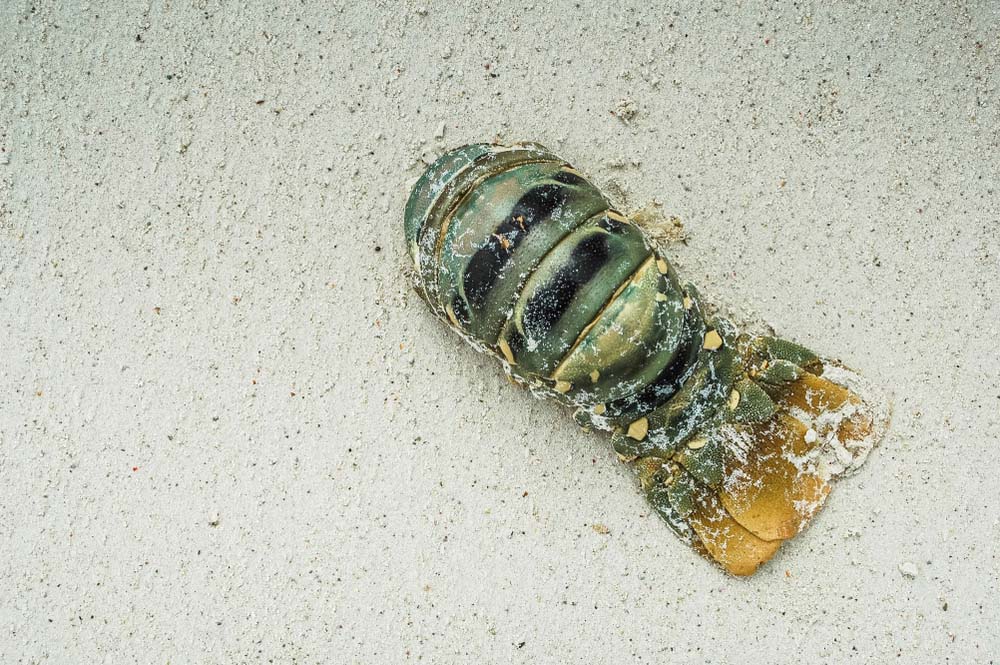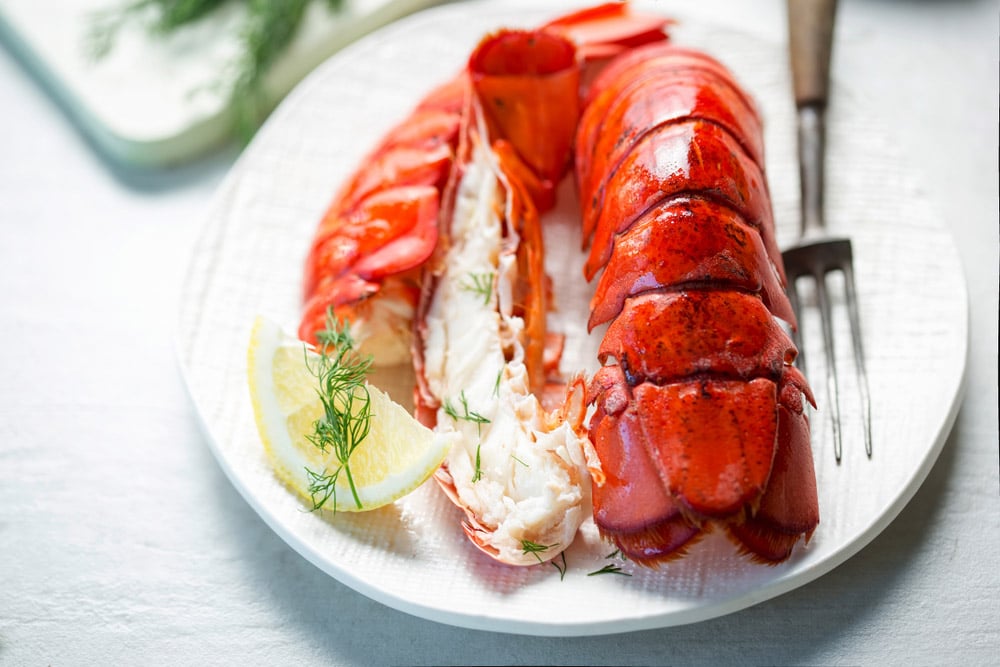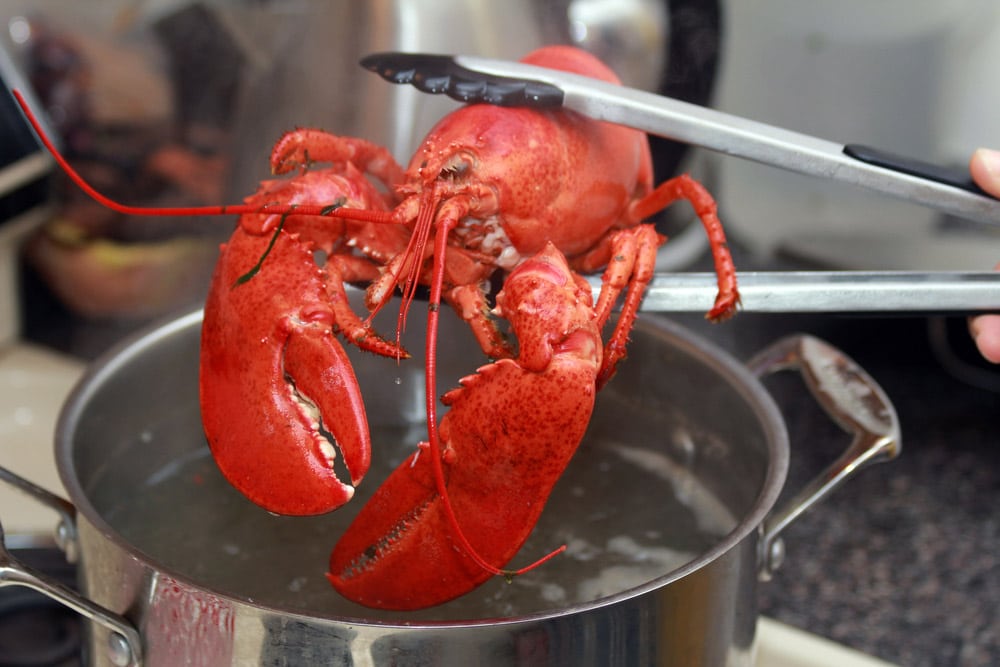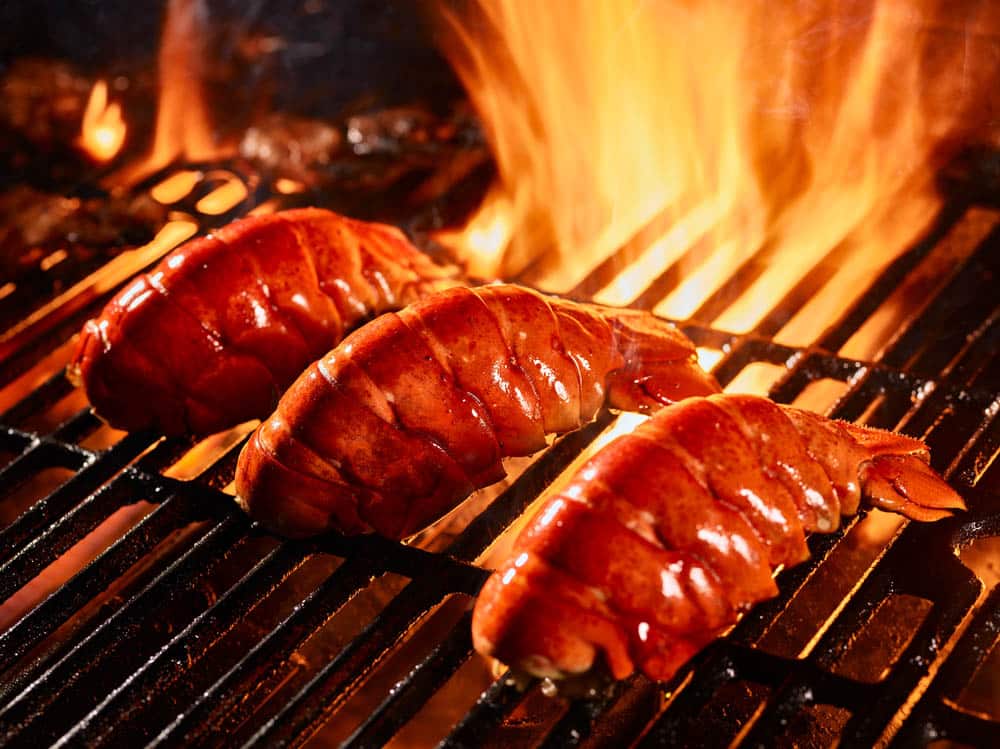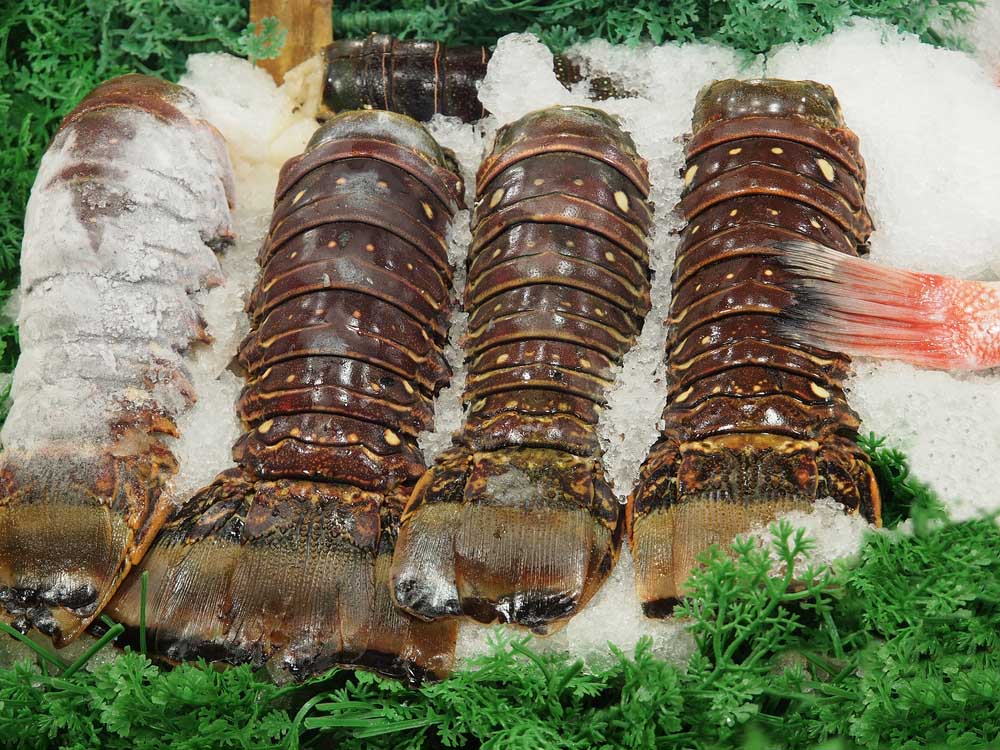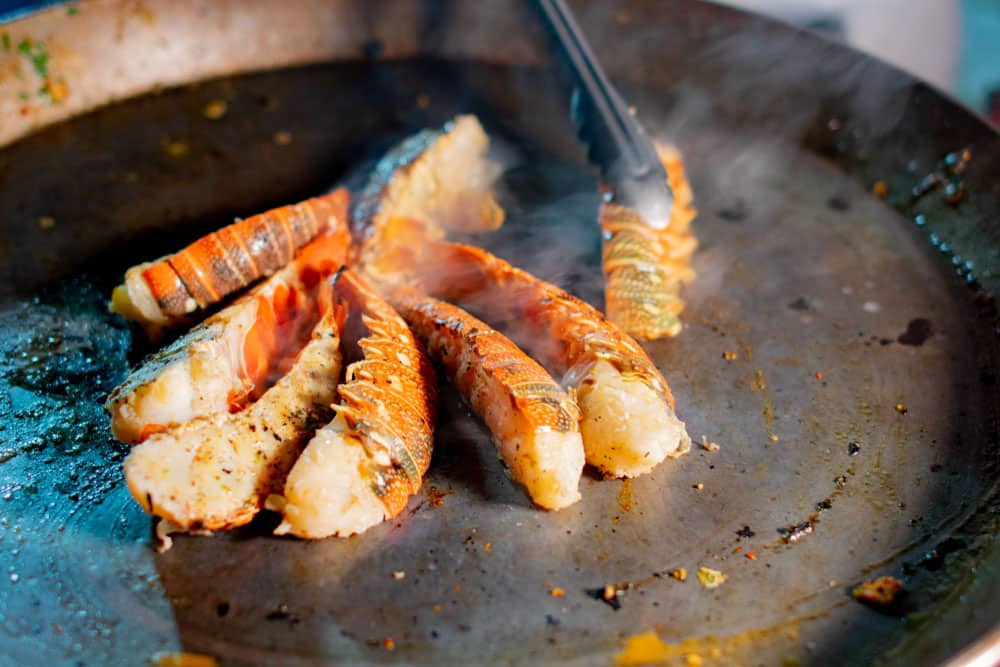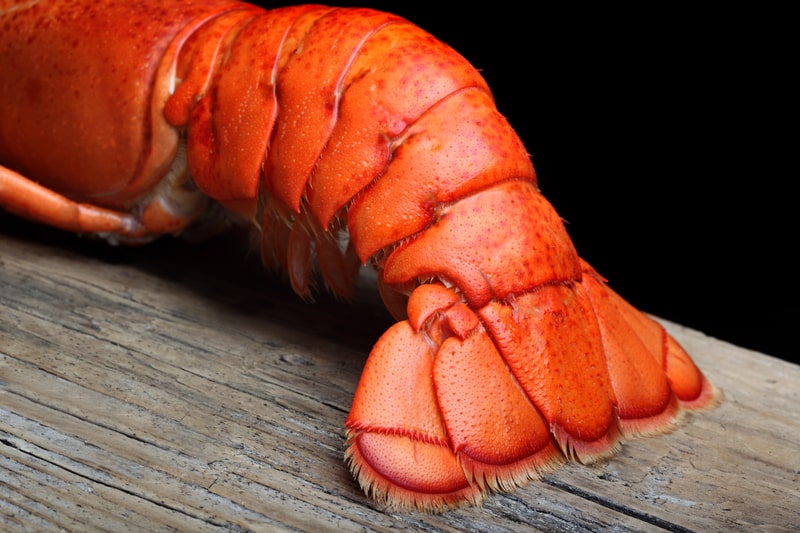
Seafood is a delicacy that most people like, especially some of the crustacean types such as lobsters, crabs, and shrimp. This type of seafood has an acquired taste. You can enjoy and appreciate the taste, texture, and nutrients from seafood if it’s prepared properly.
They are rich in taste and definitely have all the nutrients you need for a well-balanced diet. Lobster tail is one such item in the seafood pallet that is cooked all across the world.
Lobster has a distinct sweet and salty taste and a pretty great texture especially when paired with the right condiments. However, at the same time, you must be careful about the preparation because lobster is extremely pricey.
If the lobster tails that you are preparing or have prepared appear to have a mushy texture, there could be several problems with the food. In this post, we’ll explore some of the common reasons why your lobster’s tail is mushy and how to prevent it.
Why Is My Lobster Tail Mushy?
- Freezing
Freezing seafood is a must if it’s being exported. Since it takes a lot of time and efforts for the sea food to be captured, cut, cleaned and then brought to you it must be frozen. However, you will need to be careful about the freezing conditions if you’re keeping your lobster frozen.
If the lobster tails have been frozen once then you shouldn’t have any issues with the tail being mushy. However, if the lobsters were frozen once, thawed and then frozen again it could be one of the contributing factors as to why the tail is mushy.
So if you want to avoid having sloppy lobster tail, make sure you only freeze the crustacean once. When the tails are thawed they must be prepared immediately.
- Being Dead Before Fabrication
How the lobsters have been processed or captured is another main factor behind the texture you will be getting after cooking your seafood. That’s why it’s important to properly prepare your lobster after capturing it to avoid having mushy tail on your plate after cooking it.
If the lobsters were dead before fabricating, that can release certain enzymes in the tail of a lobster which can cause problems with mushiness when cooked. That’s why, you will have to ensure that you are buying your lobsters alive and whole.
That way, you can fabricate the lobsters yourself, and cut them in the right manner. You won’t experience mushiness if you prepare your lobsters correctly before cooking them.
- Undercooking
Another reason why your lobster tail is mushy is because you’ve undercooked your seafood. Lobster is naturally mushy when it’s not cooked. When you cook the lobster at a specific temperature for a specified amount of time the texture of the meat will improve.
So, you will particularly need to be careful about the heat and the time you are sparing for the lobster tails to be cooked properly. Fortunately lobster is one of the easiest seafoods to make.
The best part about undercooking the lobster tails has to do with the ability to reheat them, and you can keep cooking them until you get the desired texture. So, if your lobster tails appear to be mushy, you will need to cook them again until the meat is done properly.
Be mindful that you shouldn’t overcook the lobster tails, because this will result in a tougher meat that’s unappealing to eat. So, just cook them for the right amount of time, and you will be able to get it all sorted out.
If they appear to be mushier, you can always let them be cooked for a few more minutes to achieve the perfect firmness and texture.
- The Lobster Has Gone Bad
Another reason why your lobster’s tail is mushy could be that the fish has gone bad. You’ll notice that the lobster has gone bad by the color, smell and taste. Crustaceans naturally have a pungent fishy smell. But lobster that has gone bad will have a foul odor.
Additionally, you can tell whether the lobster is off, by the texture of the meat. Not only will it be mushy but it will also have a slimy consistency. Take a good look at the meat before you cook it. If the meat is discolored it’s another sign that the lobster is off.
Sometimes lobster meat can turn green or white in places if it’s gone bad. If you’ve eaten lobster that’s gone bad you’ll start to show signs of food poisoning within 30 minutes of consuming the meat.
You may have signs of nausea, vomiting and abdominal pain. To avoid contracting food poisoning, it’s best to throw the lobster away and buy a fresh one from the market.
Can You Save Overcooked Lobster?
One of the reasons for a mushy lobster tail that we’ve mentioned is undercooking. But other times the lobster meat can become tough if you overcook the meat and you’ll be unable to eat it. The good news is that you can save overcooked lobster. Follow these easy steps:
- Haul out a big pot and fill it with water
- Bring the water to a rapid boil
- Put your lobster on its back and place it in a basket and cover it
- Cook the lobster for about five minutes to reheat
- Take the lobster out the pot and let it cool before you serve it with some sides
On the other hand, if your lobster meat is mushy you can use the meat in a seafood stew or add it to a soup. Simply make sure that the cause of the mushiness isn’t due to the meat going bad.
How to Prepare Lobster Tails
If you’re worried that you’re going to undercook or overcook your lobster tails then you’ll need to know exactly how to prepare them to avoid mushiness. There are various ways to cook your lobster tails such as:
- Steaming
- Baking
- Grilling
- Boiling
- Broiling
But the most popular way to prepare lobster tail is by boiling it.
- The first step is to properly thaw your frozen lobster tails. You can defrost your tails overnight by leaving them in the refrigerator. Or you can place them in a bowl of room temperature water for about 30 to 35 minutes.
- Then you must rinse and dry your tails before you cook them. Cut open your tails and remove the dark line running down the center. You can cut your tails anyway you like but the best way to prepare them is by cutting the tail down the center and removing the meat.
- To properly boil your lobster tail, add enough water to pot to cover the tails. Then bring the water to a boil and add salt. Once your water is boiling you can add your lobster tails. Cook the tails until the meat is translucent or a pinkish white color.
- If you’ve left the meat inside the shells you can wait until the shells turn red. Then drain the water and leave the lobster tails to cool slightly before serving. You can add seasonings to your meat or garlic butter.
How to Prevent Your Lobster Tails from Going Mushy
There are many ways to prevent your lobster tail from going mushy. To ensure you get the best quality lobster and the ideal flavors and textures follow these tips to prevent mushy lobster tail.
- Buy Fresh Lobster Tails
The best advice to avoid mushy lobster tail is to buy your crustaceans alive or as close to capture as possible. This means your lobster tail must be extremely fresh. Lobster that’s close to capture will have the best tasting meat and you won’t run the risk of getting food poisoning.
- Cook Your Lobster Tails the Same Day You Buy Them
If you buy your lobster tails frozen consider making them the same day you buy them. This will prevent you from thawing out the lobster, refreezing them and then thawing them out again. As mentioned before, refreezing and thawing is the main cause for mushy lobster meat.
- Cook Lobster Tail in the Specified Time
The cooking time for lobster will vary based on the size of the tails. For example, for 8 ounce lobster tails add six cups of salted water to a pot. The water should be simmering with a light boil. Add your tails and boil on a medium heat until the meat turns pink.
Ideally, you should cook lobster no more than 1 minute per ounce. So if you’re cooking 8 ounce lobster tail, you should boil the meat for 8 minutes.
Final Thoughts
As you can see there are various causes for mushy lobster tail. But there are also practical solutions to prevent your meat from becoming a mushy pile. Properly preparing and cooking the lobster is a start.
Additionally, live lobster is ideal if you want to fabricate it yourself. This will also prevent food poisoning. To assist you, use the tips and tricks in this article to prevent mushy lobster tail!
